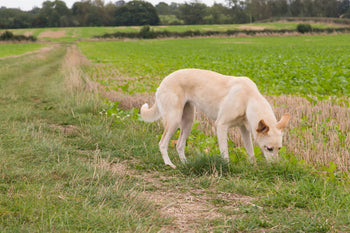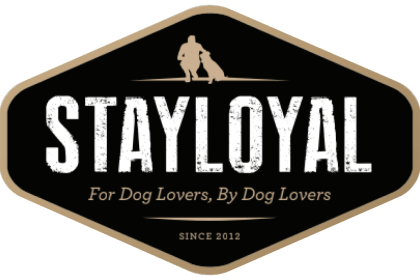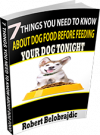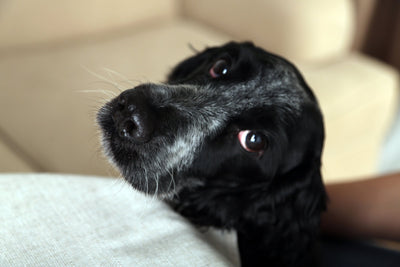How to Teach Your Dog to Leave It

Teaching a dog to Leave It – as in leave an object, piece of food, person, even another animal – is one of the most important cues. Not only can it save your stuff – say the iPhone he is about grab – but it can save your dog’s life if he is going after something poisonous or dangerous. For your dog, however, Leave It, sucks! And it does take some patience to teach. You are basically teaching your dog self-control and for some breeds, and almost all puppies, this can be particularly difficult. Here are some tips to make it easier.
Leave It Defined
Before you teach it, let’s define what exactly a Leave It looks like. Leave It is the cue you will give your dog before the item actually is in their mouth. You can also use Leave It for dogs that chase things – the earlier you catch them the more likely they will respond. For example, say Leave It while they are staring at the cat about to chase, rather than waiting until they are already chasing it to try and get them to leave it. At that point it is much harder for your dog to physically respond because their instinctual prey drive has kicked in.
As with any behavior, first you want to decide what the behavior looks like. For example, some people just want their dog to stop going towards whatever they asked them to leave, and that’s it. The dog can do whatever they want after that. Others, want a more structured Leave It that might entail:
- Interruption of moving towards an object or staring at something AND then returning to owner.
- Interruption of moving towards an object or staring at something, AND giving eye contact back to the owner.
Regardless of whether you want your dog to just leave it alone, leave it alone and come to you, or leave it alone and give you eye contact, the important part is this: the dog never gets the item once you have asked him to leave it. This is a common mistake people often make. They will ask their dog to leave something and then let them have it as the “reward.” All you have taught your dog is that Leave It means to leave something for a second or two and then grab it. Be careful with that.
Regardless of whether you want your dog to just leave it alone, leave it alone and come to you, or leave it alone and give you eye contact, the important part is this: the dog never gets the item once you have asked him to leave it. This is a common mistake people often make. They will ask their dog to leave something and then let them have it as the “reward.” All you have taught your dog is that Leave It means to leave something for a second or two and then grab it. Be careful with that.
Teaching Leave It
It’s easiest to start with something you can control, but that your dog wants. A piece of food works well for this.
1. Hold the piece of food in your closed hand so your dog can smell it but can’t get it. Let him try as much as he wants. Most dogs will lick and pay at your hand. As soon as he stops and leaves your hand alone, mark it with a marker word such as “yes” or “good” and reward! This lets your dog know that what you want is for him to leave your hand alone. Your timing has to be pretty good. You want to say the marker right as he is leaving your hand. Then you can reward him with your usual praise of “good boy” and an ear scratch, etc. Otherwise, if you just present another reward (verbal praise, food, whatever), your dog will just be getting distracted from the object but not learning to turn away on their own.
2. Continue this until your dog stops going to your hand at all. Mark and reward.
3. Then, add your next step, if you have one. Such as returning to you, giving eye contact, etc. To do this, you are then going to delay your marker word and see if your dog offers the next step. So let’s say you want eye contact (a common one since it gets the dog focused back on you and not whatever it was that he wanted). When he moves his head away this time, do not say your marker. Most dogs will look at you after a second or two like “hey I did what you wanted, where’s my reward?” As soon as he looks at you, say your marker word and reward.
(Note: If he doesn’t look at you, you can “help” by blowing softly on his ear, making a weird noise, etc. But don’t use these helps too many times, or they become a crutch!)
4. Once your behavior looks exactly like you want it to, then add the cue “Leave It” by saying it as your dog is leaving your hand.
5. Once the cue is added, start over by opening your hand so know the food is exposed. If your dog dives for it, simply close your hand and wait for him to stop going toward your hand, then open it again (do not reward at this point!). Wait until your dog has leaves the open hand and then reward. If he fails three times, he is not ready for an open hand. Go back to the closed and practice some more. Remember, distance makes things easier so you can also have your hand open but further away from your dog to make it easier at first.
5. Once the cue is added, start over by opening your hand so know the food is exposed. If your dog dives for it, simply close your hand and wait for him to stop going toward your hand, then open it again (do not reward at this point!). Wait until your dog has leaves the open hand and then reward. If he fails three times, he is not ready for an open hand. Go back to the closed and practice some more. Remember, distance makes things easier so you can also have your hand open but further away from your dog to make it easier at first.
Gradually increase the difficulty so your dog is always successful.
Leave It, is a great cue for any dog to learn since it helps them gain self-control. If your dog stops responding to it, it means you are asking him to leave something that is too strong of a draw for him at his level of self-control. You can make it easier by adding distance between him and the object. If this does not work, you may need to find something that is a bit harder than what he has been working on, but not as hard as that prized object, to keep building up his self-control. If you try to jump ahead too quickly, it can cause stress and your dog may start to exhibit stress signs such as whining, lip licking, and even freezing before they blow through your cue and go after whatever it is you asked them to leave. This happens most often when you are asking a dog prone to chasing to leave a moving object or a reactive dog to stop staring at a dog/human. In these cases you may find it useful to work with a professional trainer to help your dog relax so he can respond to your cues.








